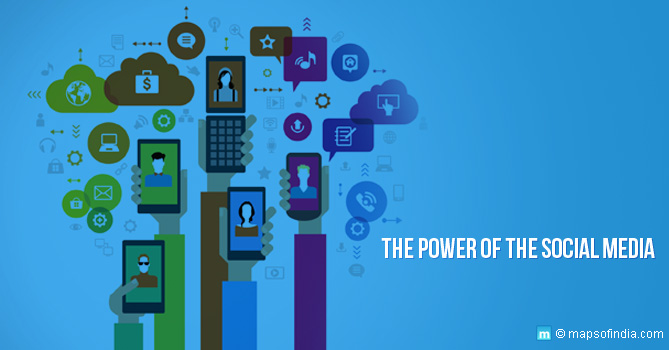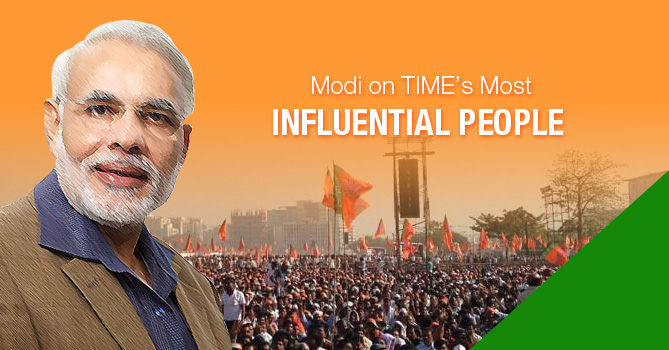Social media is a new phenomenon worldwide and is here to stay. Social media has enabled people to be connected in real time and is bringing out new facets of people interest, engagement and behaviour.
From trivia to disasters, information reaches people as it happens and is keeping them engaged like never before. But how they express or react thereafter, makes social media a double-edged sword. Just yesterday, the plight of a young schoolboy from a poor family, sitting outside a Noida metro station, trying to earn some money through a weighing scale and studying at the same time, caught a commuter’s attention. He took a picture and uploaded on Facebook, which went viral. In response, there have been several people who have come forward to help, including the U.P Chief Minister Akhilesh Yadav, who has promised to ensure full opportunity for the boy to study without having to work. While this may be an example of the positive impact of social media, the negative side is also gaining ground, perhaps dangerously.
In 2012, one of the early cases of misuse of social media came to the government’s attention, when morphed pictures and videos of earthquake victims began to go viral on social media. Miscreants were morphing these images to show that these were Muslim victims of civil riots in Assam and Burma. This was done to provoke further riots by vested interests and it did bring a reaction.
The social media space was soon full of hate and revenge messages against Hindu migrants living in South India, which spread panic and soon there was mass exodus of people from the North East, who were forced to return back to Assam and other Northeastern states. This was a clear example of the negative side of social media which helped in stoking mass hysteria in a very short time.
At the individual level, social media is full of examples where a relationship gone sour results in one of the partners uploading intimate pictures, videos or information, in revenge against their former partners. Whatever the subsequent legal consequences, the damage to the victim’s reputation is instant and in some cases, results in fatal consequences.
Another fallout of social media is the evolution of all types and genres of porn and its easy access by minors, which is resulting in rapidly changing social behaviour and redefining morality, especially amongst the younger generation. With more people participating in porn and even greater numbers accessing it, the opportunity to make easy money is unfortunately helping the industry grow rapidly, on the back of social media. The society can neither do away with it nor ignore it.
The problem is that society is not keeping pace with the rapidly changing technology and is not prepared to address the social consequences that will most likely result in unfamiliar, and perhaps unacceptable, social behaviour by the next generation. In many societies, social media is increasing the gap between the older generation and the younger one rather than bringing them closer.
Should the government intervene by banning or curbing the use of social media from time to time?
In a world where, Facebook, Twitter and Instagram have become everyday places to hangout, the consequent responsibility of using these platforms is still evolving. As the internet and mobile penetration increases in India and brings more first time users onto these platforms, the dangers of mass hysteria or communal reactions spreading with serious consequences, increases manifold. Therefore, it is imperative for the government to get together all stakeholders of civil society and try and address the issue of balancing media freedom with media regulation.
In any free society, this is a sensitive subject that will result in an uproar of opposition to any kind of curbs or regulation, but the problem is that all societies are not equal and therefore each society will have to evolve its own mechanism to address the negative consequences of a free social media.
The Indian government recently blocked the internet and social media for a day during the Patel agitation in Gujarat. They did the same thing in J&K on Eid this month as a preventive measure. While Gujarat was more or less peaceful, in J&K, despite the ban, there was violence and clashes with the police. The situation could have been much worse had internet and social media been accessible. There are enough vested interests out there waiting to take advantage of moments like these and it’s the government’s responsibility to deal with it.
Ignorance and lack of training on part of the police is adding to the problem
Cases of arrest for uploading comments on Facebook against politicians or public figures, often results in police taking action without knowing the current laws, or understanding the facets of social media. The arrest of two girls for uploading comments against a bandh called in the aftermath of Bal Thackeray’s death in Mumbai, is a case in point. Police in most states are completely ignorant of the developments in technology or social media, and therefore ignorant of its use and misuse. With no exposure or training in cyber-crimes or social media, most are completely unprepared to take either preventive measures or deal with any resulting situation as it emerges.
Are Cyber laws in place to address all kinds of evolving situations?
The answer is no. Social media has been gaining popularity since the last 8-10 years but the government’s response has been far from satisfactory. There are several issues that are related and need to be addressed. At an individual level, there is a thin line between freedom of speech and someone using social media to tarnish another person’s reputation, business or livelihood. Then there are issues of privacy of individuals and also right to information, all of which needs to be clearly defined and laws written to address all related issues.
In terms of social media content, where do you draw a line between what is freedom of speech and what comprises derogatory, seditious or communal content? What may seem acceptable to one part of the country may be completely unacceptable to another part? Again, what is seen to be acceptable to urban citizens may not be socially acceptable to the rural folk. And, it takes just one upload to go viral and trigger a violent reaction. These are very real issues and the government is yet to respond to these emerging threats with the urgency that it should.
Time for government to define Cyber Security Laws and Cyber Management policies, on priority
With the world getting increasingly connected through the web and India on the cusp of a ‘Digital’ revolution, the government must take up establishing clear cyber security laws and cyber management policies on an urgent basis. As on June 2015, there are already 213 million mobile internet users in the country and the numbers are increasing rapidly. Social media could work as a development catalyst or could become a national threat. The government must act now and fast before this dinosaur turns into a Jurassic Park.
Read More:
Article 66A of IT Act and Social Media Censorship in India
Advantages and Disadvantages of Social Media
Impact of Social Media in India
How Fake Accounts can impact Facebook?
How the traditional and digital media growing in India?
What Ails BJP’s Social Media Campaign






